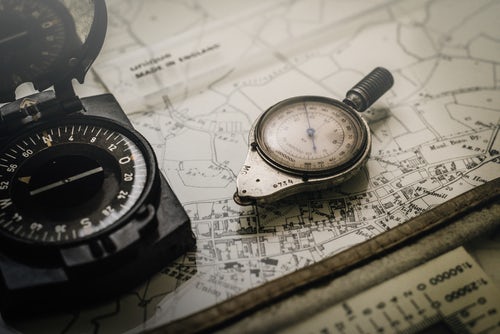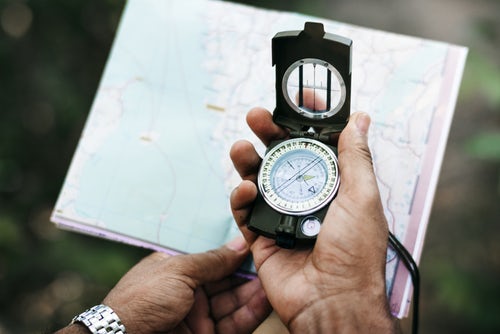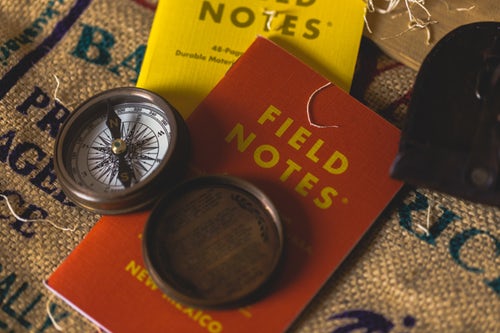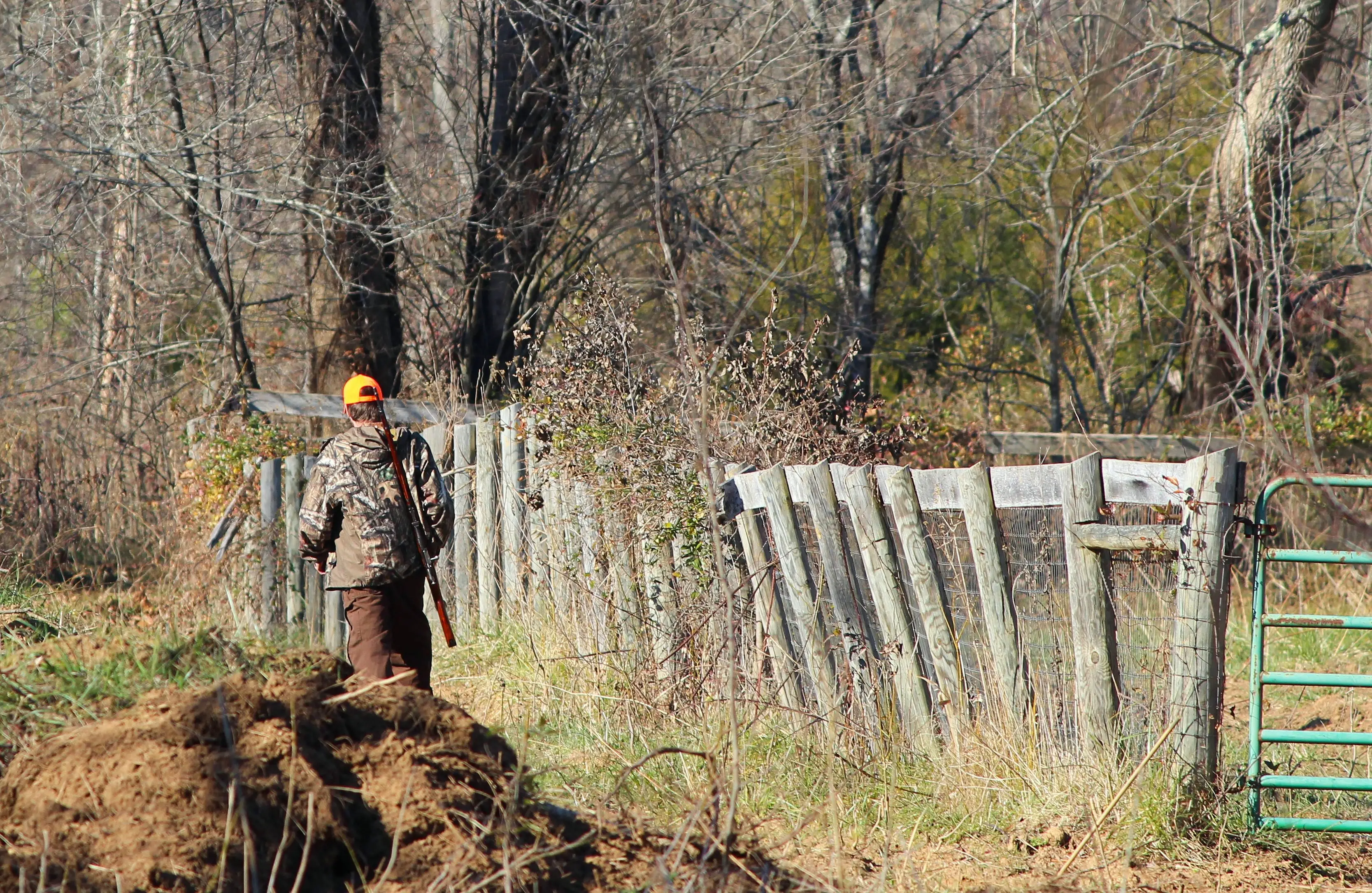How to Use a Compass: A Complete Guide
 How to Use a Compass: A Complete Guide
thegearhunt.com
How to Use a Compass: A Complete Guide
thegearhunt.com
Men go back to sailing ships on the sea or go back to mountains because in the sea and on mountains they need to face up to the challenge posed by nature. Today, we live in a kind of existence that is highly synthetic. We specialize in this or that. Rarely do we test all of our powers or find ourselves whole. However, on the water or in the hills, our true character peeks through.
Nobody can argue that technology and its rapid advance through the years have caused drastic improvements in our lives. There are also a few negative consequences that go hand in hand with these advancements. For the average person, it is quite frequently the case that when technology increases, the knowledge that we have decreases. Those skills that once were known to everyone just a few generations ago have withered through the years and technology has become our crutch. The development of the internet and our usage of the omnipotent Google has put entire worlds of knowledge right at the tips of our fingers, but as this information becomes ever more readily available, people don’t have any sort of motivation to learn it and keep it within themselves.
The actual issue isn’t whether or not machines can think, but whether or not we can.
While those positive aspects of our unprecedented access to all sorts of knowledge outweigh those negative aspects, there is still something to be said for keeping some of the skills that former generations had. With that in mind, let’s talk a bit about an old tool. This tool once guided people across unforgiving seas and through even the darkest of jungles for many generations. The humble compass. In the following paragraphs, we will discuss how they are made and used, and we will also look at basic techniques of navigating with them.
Basic Styles
 There are quite a few different variations of this tool that are available, but 2 different models stand out when it comes to them being a standard piece of equipment for outdoorsmen and hikers. The lensatic compass and the baseplate compass.
There are quite a few different variations of this tool that are available, but 2 different models stand out when it comes to them being a standard piece of equipment for outdoorsmen and hikers. The lensatic compass and the baseplate compass.
Both of these styles came to fame during WWII. During that time, the lensatic compass became standard issue for the US Army, and it remains so even now. The instructions that we will go over next will be for using that model due to the fact that of the two styles, the lensatic is the one that is the most durable. That being said, the basic tenets involved in using a compass to navigate will apply to both of these models.
Breaking it Down
When you first look at it, the lensatic compass might seem to be more than a bit daunting. It is covered in a variety of markings and has multiple parts that move, and this combines to make it seem as if it will demand a high skill level to use it successfully. This isn’t the case though. With just a bit of knowledge regarding its basic functions, you will be able to use this type of compass like a pro in no time.
There are 3 main areas to this type of compass. They are the reading lens, the base, and the cover. Essentially, the cover is a lid and it contains what is known as a sighting wire. The base is actually the bottom portion of the device and it contains the floating dial of the compass that has markers for the cardinal directions, the thumb loop, and the bezel that is surrounding the floating dial. The dial is known as a floating dial due to the fact that it actually floats in liquid, which is typically some sort of oil. Keeping the dial protected is a cover made from glass that has an index line that is fixed etched right into it. There is additionally a smaller line on this lens that will rotate along with the bezel. The actual reading line will be mounted to a movable arm that is attached right to the base part of the compass. It will fold flat on top of the dial so that when you close the compass it is protected.
Holding the Compass
 Using the right technique when you hold a compass is actually critical. This is because holding it improperly will give you bad readings, and this can potentially mean you getting lost. There are predominately 2 different ways to properly hold a lensatic compass in order to take a reading. There is the compass to cheek method and the center hold technique.
Using the right technique when you hold a compass is actually critical. This is because holding it improperly will give you bad readings, and this can potentially mean you getting lost. There are predominately 2 different ways to properly hold a lensatic compass in order to take a reading. There is the compass to cheek method and the center hold technique.
In order to use the center hold method, you will need to open your compass to 180°. This means that if you were to lay it on a table, its cover and the base should lie flat on the surface of that table. Now, just fold the thumb loop to the open position and hold the compass. While you are standing with your elbows tight in to your sides, hold the compass out right in front of your torso. If you want to take a reading, point your whole body at whatever your target object is in the distance while holding the compass in this way. Once you have centered in on that object, look at the compass and pay attention to the degree that is marked under the dial’s fixed index line.
Compass to Cheek
The name of this method leaves very little to the imagination. It really is quite self-explanatory. Open the cover to about 90° and open the reading lens to 45°. Then, fold the thumb hook all the way open. Put your thumb into the thumb hook and then grasp the compass.
Taking Bearings
 Hold the compass with the grip you prefer and find a target object somewhere in the distance. This might be anything from a radio tower to a mountain. If you happen to be using the center hold method, point your compass at this object. If you happen to be using the compass to cheek method, find the object through the sighting wire on the compass, and center this wire on the target. While you are holding this specific position, pay attention to the degree mark.
Hold the compass with the grip you prefer and find a target object somewhere in the distance. This might be anything from a radio tower to a mountain. If you happen to be using the center hold method, point your compass at this object. If you happen to be using the compass to cheek method, find the object through the sighting wire on the compass, and center this wire on the target. While you are holding this specific position, pay attention to the degree mark.
Using a Compass to Navigate
After you have taken note of the degree mark, just rotate your bezel until that movable line that has been etched into the glass is in direct line with the directional arrow for North. This is how you orient yourself. It won’t matter what the visibility is, is you have the North arrow in line with the movable line, your target object will always be in the direction that your sighting wire is in. Make sure that you take your bearings again whenever it is possible so that you will leave very little room for any sort of error.
Other Things to Remember
 Always keep in mind that since a compass uses magnetic energy to work, it might be affected by any nearby metal objects. For example, if you happen to be standing along with a kit that is full of metal tent poles right on your back while you attempt to take a reading, you might end up with a false North and end up walking in circles around the area all day long.
Always keep in mind that since a compass uses magnetic energy to work, it might be affected by any nearby metal objects. For example, if you happen to be standing along with a kit that is full of metal tent poles right on your back while you attempt to take a reading, you might end up with a false North and end up walking in circles around the area all day long.
Also pay attention to high tension power lines. You should be a minimum of 50 yards from them anytime you attempt to take a bearing.
Always make sure that the dial of your compass is freely able to move and that the entire compass in undamaged so that it will give you good readings.
Choosing a Compass
The ability to be able to navigate using a compass and map is a critical skill that might just save your life one day. Your map and compass can also be helpful in other ways, like letting you know right where you are, and which way would be the best option to reach your destination.
Both the map and the compass should be mandatory gear. A GPS receiver should be optional. This is due to the fact that you should never let your life depend on a battery. Dedicated cell phone apps and GPS receivers are good tools, but they shouldn’t ever be relied upon when you are lost in the wilderness.
When it comes to selecting a compass, there are 4 main things to consider.
- Global needle – if you happen to be a traveler of the world, or just happen to be taking a trip that will take you below the equator, you will need a compass that has a global needle.
- Clinometer – When it comes to back country skiing or mountaineering, a compass that is equipped with a clinometer will be able to assist you with assessing the danger of an avalanche. Search and rescue personnel and field scientists tend to rely on these devices.
- Sighting mirror – If you are looking for precise navigation or plan to do any off trail traveling, you will want a sighting mirror and a declination adjustment.
- Declination adjustment – Any compass that is worth its salt should have this feature if you are a trail user or hiker.

Features
Yes, all compasses will point to the designated direction, but they can also have a vast array of features that go beyond that. Typically, a compass that has more features will be more expensive, but things like durability and precision will also factor into the price.
Basic Features
Magnetized needle. This is typically the red end of the needle on the compass that pivots. It will point to the magnetic north. Most of the time, compass needles will be floating in some sort of damping fluid that will make their movement steady. This isn’t a fluid that will freeze, but at times, it can form bubbles. These bubbles don’t generally impact the movement of the needle.
Azimuth ring or rotating bezel. This is the ring of the compass that is marked with degrees. It should surround the outer edge of the capsule where the needle floats. If the degree intervals are smaller, this will lead to navigation that is more precise.
Base plate. This base is flat and transparent. It will feature a vast array or navigational markings that should include a ruler for measuring the distances on maps.
Orienting lines and arrows. Any markings on the base plate or the housing of the needle are meant to be used for a wide variety of basic navigation aspects.
Additional Features
Magnifying lens. Some of the compasses you can find will have a magnifying lens set right into the base plate. This can be handy for reading the details on a map.
Luminescent indicators. If you are getting started before dawn or trying to make your way back after sunset, you might be glad to have a compass that is equipped with this.
Beware of digital accessory compasses. Compass lookalikes that can be found on zipper pulls, watchbands, or key chains can be fun, but they aren’t exactly good tools for navigation. Even a compass feature that might be on a multifunctional watch won’t be a good substitute for a basic baseplate compass with a needle.
Learn how to properly use your compass. One good way to accomplish this is to take a class with an outdoor school or at a local outdoor organization. Before you purchase a compass for the class, ask the instructor what will be needed.
Of course, this is just a very basic introduction into what can be done with proper training and a good compass. If you want a more detailed guide that will have some of the more advanced techniques for compasses, find an Army Field Manual either at your local bookstore or online. Always remember that GPS units can be incredibly handy, but batteries will die, and circuit boards can short circuit, and when this happens, you will be glad of a trusty compass that will be able to guide you back to civilization.
Sources
- You Tube, How to Use a Compass and Map
- Gizmodo, How to Use a Map and Compass
- American Hiking Society, How to Use a Compass
- Backpacker, How to Use a Compass















